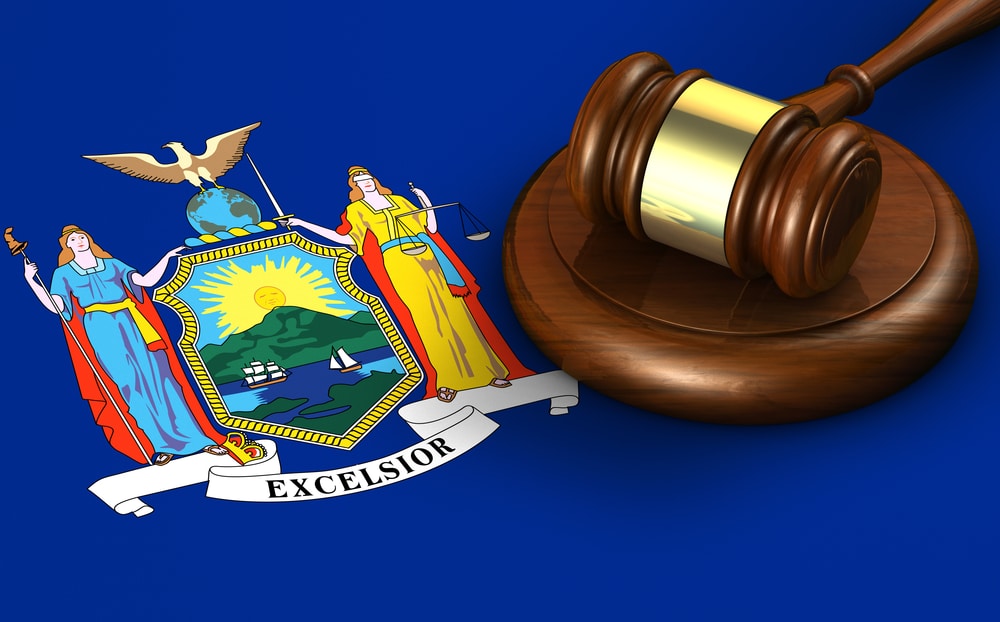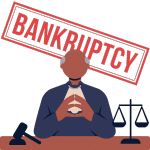New York State Bankruptcy Guide

Introduction
New York’s bankruptcy system reflects the state’s diverse economic landscape, from bustling urban centers to quiet rural communities. The state’s bankruptcy courts and exemption laws are designed to accommodate this diversity while providing comprehensive protection for residents facing financial difficulties.
Understanding New York’s specific bankruptcy rules and exemptions is crucial for anyone considering filing in the state. The requirements, protections, and procedures can vary significantly depending on your location within New York, with special considerations for residents of New York City and its surrounding metropolitan area.
The state’s bankruptcy framework offers some of the most generous exemptions in the nation, particularly for residents of high-cost areas like New York City, Long Island, and the lower Hudson Valley. These protections reflect the state’s recognition of the varying costs of living across different regions.
New York’s bankruptcy system operates through four federal districts, each serving distinct geographic areas and populations. This distributed system ensures accessible bankruptcy services while accounting for regional economic differences and population density.
Whether you’re in Manhattan or rural upstate New York, the state’s bankruptcy laws aim to provide a fresh financial start while protecting essential assets. This guide will help you understand the specific rules, exemptions, and considerations that apply to New York residents filing for bankruptcy.

State Bankruptcy Courts
Northern District
The Northern District, headquartered in Albany, serves the capital region and northern portions of New York State. With additional locations in Syracuse, Utica, and Binghamton, this district ensures accessibility for residents across a large geographic area. The court’s website (www.nynb.uscourts.gov) provides essential resources and filing information for residents of the region.
This district handles unique challenges related to rural communities, agricultural businesses, and seasonal economic fluctuations. The multiple court locations help reduce travel burdens for residents of this geographically expansive district.
The Northern District’s procedures often reflect the needs of its diverse constituency, from urban professionals in Albany to rural farmers in the North Country. Each location maintains specific filing procedures and local rules while following consistent federal bankruptcy guidelines.
Southern District
Manhattan’s Southern District serves as a global financial hub and handles some of the nation’s most complex bankruptcy cases. With additional locations in White Plains and Poughkeepsie, this district manages cases from New York City’s financial district to the suburban communities of the Hudson Valley.
The Southern District (www.nysb.uscourts.gov) frequently deals with high-value cases and complex financial instruments, given its proximity to Wall Street. However, it maintains efficient procedures for individual consumer bankruptcies as well.
The district’s expertise in handling both sophisticated corporate reorganizations and individual cases makes it one of the most influential bankruptcy courts in the country. Its procedures often serve as models for other jurisdictions.
Eastern District
Based in Brooklyn with an additional location in Central Islip, the Eastern District (www.nyeb.uscourts.gov) serves one of the most densely populated and diverse regions in the country. This district handles a high volume of consumer bankruptcy cases from Brooklyn, Queens, and Long Island.
The Eastern District’s procedures are particularly well-adapted to urban challenges, including rent stabilization issues and high living costs. The court maintains efficient systems for processing the large number of cases filed in this populous district.
Special attention is given to language access and cultural considerations, reflecting the district’s diverse population. The Central Islip location provides convenient access for Long Island residents.
Western District
The Western District, with locations in Buffalo and Rochester (www.nywb.uscourts.gov), serves the western portion of New York State. This district handles unique cases related to industrial decline, agricultural businesses, and cross-border matters with Canada.
The court’s procedures reflect the region’s economic challenges and opportunities, including cases involving former manufacturing businesses and agricultural enterprises. Special consideration is given to seasonal income variations common in the region.
The district maintains expertise in handling cases involving international assets due to its proximity to Canada, while also efficiently processing consumer bankruptcies for local residents.
New York Property Exemptions
Homestead Exemption
New York’s homestead exemption varies by county, recognizing the significant differences in property values across the state. Residents of New York City, Long Island, and the counties of Westchester, Rockland, and Putnam can protect up to $179,975 in home equity, reflecting the higher property values in these areas.
The middle tier includes counties like Albany, Dutchess, Orange, Saratoga, and Ulster, where residents can exempt up to $170,825. The rest of the state allows exemptions up to $142,350. These amounts double for married couples filing jointly, providing substantial protection for family homes.
The homestead exemption applies to various types of residences, including houses, condominiums, co-ops, and manufactured homes. This flexible approach ensures protection regardless of housing type, particularly important in urban areas where cooperative apartments are common.
Personal Property Exemptions
New York provides generous personal property exemptions designed to help residents maintain a reasonable standard of living during and after bankruptcy. Vehicle exemptions allow protection of up to $4,550 in equity, with an increased exemption of $11,375 for vehicles equipped for disabilities.
Clothing and personal effects receive full protection, while household goods are protected up to $1,000 per item. Wedding rings receive unlimited protection, and additional jewelry can be protected up to $1,150. Professional books and tools receive protection up to $3,400.
These exemptions reflect New York’s commitment to preserving dignity and basic living standards through bankruptcy. The protection of health aids and family photos at full value demonstrates the state’s recognition of both practical and sentimental property values.
Wage Exemptions
New York’s wage exemptions provide substantial protection for income needed to maintain basic living standards. Residents can protect the greater of either 90% of their disposable earnings or 30 times the minimum wage.
Enhanced protections exist for New York City residents, recognizing the higher cost of living in the metropolitan area. Special provisions also exist to protect income needed for rent and utilities, helping ensure housing stability during bankruptcy.
The state’s wage exemption structure helps ensure that individuals filing for bankruptcy can maintain necessary income for basic living expenses while working through the bankruptcy process.
Tools of Trade
New York law protects up to $3,400 in tools, equipment, and instruments necessary for work. This protection extends to professional libraries, commercial vehicles, and business computers essential for earning a living.
The exemption covers work-specific equipment necessary for various professions, from traditional trades to modern digital occupations. This broad interpretation helps protect the ability to continue working and earning income during and after bankruptcy.
Special considerations apply to specific professions, with additional protections available for certain types of equipment or tools essential to particular trades or businesses.
Additional Exemptions
Most retirement accounts receive full protection under New York law, including 401(k)s, IRAs, and pension plans. Public benefits, workers’ compensation, and unemployment benefits are also fully protected.
Rent stabilization rights and cooperative apartment shares receive special protection, reflecting the importance of housing stability in New York’s urban areas. These protections help preserve important housing rights through the bankruptcy process.
The state provides additional exemptions for various types of property and rights, demonstrating a comprehensive approach to protecting essential assets and benefits during bankruptcy.
Special New York Considerations
State-Specific Requirements
New York requires completion of approved credit counseling from authorized providers before filing bankruptcy. Residency requirements must be met to take advantage of New York’s exemptions, typically requiring domicile in the state for at least 730 days before filing.
The state maintains distinct approaches for urban and rural areas, recognizing their different economic characteristics and challenges. High cost of living adjustments are incorporated into various aspects of bankruptcy administration, particularly in metropolitan areas.
These requirements ensure that bankruptcy protection is appropriately tailored to New York’s unique economic and social conditions while maintaining consistency with federal bankruptcy law.
Median Income Thresholds
As of 2024, New York’s median income thresholds vary by household size, with single persons at $63,482, families of two at $84,954, three at $98,674, and four at $116,486. New York City residents receive a 15% adjustment to these thresholds.
Each additional family member adds $9,900 to the threshold amount. These thresholds are crucial for determining Chapter 7 eligibility and Chapter 13 plan requirements.
The state’s median income thresholds reflect regional economic variations and help ensure that bankruptcy protection remains accessible to those who need it while preventing abuse of the system.
Regional Variations
Significant differences exist between NYC/Long Island and upstate regions regarding exemption amounts and property valuations. Urban areas face distinct challenges related to rent control and stabilization rights.
Rural areas receive special consideration for agricultural assets and seasonal income patterns. The bankruptcy system’s regional adaptability helps ensure appropriate protection regardless of location within the state.
These variations acknowledge the diverse economic conditions across New York State and provide appropriate protections for different regions’ specific needs.
Common Questions in New York
Urban vs Rural Filing
The choice between urban and rural filing locations can significantly impact exemption amounts and property valuations. Court accessibility varies by region, potentially affecting the practical aspects of filing and attending required meetings.
Cost of living adjustments play a crucial role in determining eligibility and payment requirements, particularly in metropolitan areas. Understanding these differences helps ensure optimal use of available protections.
Regional variations in property values and living costs require careful consideration when choosing where to file and which exemptions to claim.
Rent Control/Stabilization
Bankruptcy filing can affect rent-controlled and rent-stabilized tenancies, requiring careful attention to preserve these valuable rights. Lease continuation rights receive special protection under New York law.
Succession rights in rent-controlled and rent-stabilized apartments must be carefully managed during bankruptcy. Special proceedings may be necessary to protect these rights through the bankruptcy process.
Understanding the interaction between bankruptcy and rent regulation helps ensure preservation of important housing rights.
Multi-State Issues
New York’s position as a major commuter hub requires careful consideration of income from multiple states. Property location can affect which exemptions apply and which court has jurisdiction.
Employment protection across state lines requires attention to multiple jurisdictions’ requirements. The complexity of multi-state issues often necessitates specialized legal assistance.
Careful planning helps ensure appropriate protection of assets and rights across state lines while maintaining compliance with all relevant jurisdictions.
Conclusion
New York’s bankruptcy system offers robust protections while accounting for the state’s diverse economic and geographic conditions. Understanding these state-specific rules and exemptions is crucial for achieving the best possible outcome in bankruptcy.
The variation in exemption amounts and special provisions across different regions demonstrates New York’s recognition of its diverse population needs. From urban apartment dwellers to rural homeowners, the system provides appropriate protections for various living situations.
Working with qualified legal professionals who understand New York’s specific bankruptcy requirements can help ensure maximum benefit from available protections. Regular updates to exemption amounts and procedures require ongoing attention to current rules and requirements.
Success in New York bankruptcy cases often depends on careful preparation and understanding of both federal and state-specific requirements. The state’s generous exemptions and varied court system provide opportunities for meaningful debt relief while protecting essential assets.
The path through bankruptcy, while challenging, offers New York residents a legally protected route to financial recovery. With proper guidance and understanding of state-specific rules, residents can work toward a fresh financial start while maintaining dignity and essential property.
